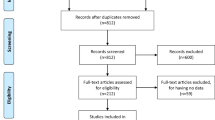Abstract
Background
Diversity, equity, and inclusion (DEI) are at the core of publication ethics, and language around DEI has been shown to affect patient outcomes. Inclusive language is an important piece of effective communication and is one way to demonstrate and foster a welcoming, respectful, and accessible environment. Non-inclusive terminology in research may represent implicit bias, which is not typically corrected through introspection; thus, a systematic approach is needed in scientific writing. The prevalence of inclusive language guidance in leading medical journals is currently unknown.
Objective
Investigators assess the prevalence and quality of inclusive language guidelines in author instructions in highly cited English language medical journals.
Design
A cross-sectional review of author instructions from a convenience sample of 100 highly cited medical journals was completed in January 2023.
Subjects
Each journal’s author instructions were reviewed for presence of inclusive language guidelines for manuscript submissions.
Main Measures
Guidelines that included specific examples of inclusive language were defined as “strong.” Author instructions were also reviewed for the Sex and Gender Equity in Research (SAGER) checklist, and each journal’s publisher and impact factor (IF) were recorded.
Key Results
The 100 journals reviewed had an IF range of 3.0–202.7 with a median IF = 19.5 (IQR 11.95, 38.68), and 28 unique publishers were represented. Inclusive language guidance was provided in 23% of medical journals reviewed. Of those, 20 (86.9%) provided strong guidance. Seven journals also recommended use of the SAGER checklist.
Conclusion
Significant gaps still exist in ensuring use of inclusive language in medical journals.
Similar content being viewed by others
Abbreviations
- AMA:
-
American Medical Association
- AMWA:
-
American Medical Writers Association
- APA:
-
American Psychological Association
- DEI:
-
Diversity, equity, inclusion
- IF:
-
Impact factor
- SAGER:
-
Sex and Gender Equity in Research
References
Saleebey D. The strengths perspective in social work practice: extensions and cautions. Soc Work 1996;41:296-305.
inclusive. 2023. In Merrian-Webster.com https://www.merrian-webster.com/dictionary/inclusive. Accessed 8 Aug 2023.
Jensen ME, Pease EA, Lambert K, et al. Championing person-first language: a call to psychiatric mental health nurses. J Am Psychiatr Nurses Assoc 2013;19:146–151
Heidari S, Babor TF, De Castro P, Tort S, Curno M. Sex and gender equity in research: rationale for the SAGER guidelines and recommended use. Research Integrity and Peer Review 2016;1:1-9. https://doi.org/10.1186/s41073-016-0007-6.
Flanagin A, Frey T, Christiansen SL. Updated guidance on the reporting of race and ethnicity in medical and science journals. JAMA 2021;326(7):621.
Link BG, Phelan JC. Stigma and its public health implications. Lancet 2006;367:528–529.
Wang F, Shen X, Xu S, et al. Negative words on surgical wards result in therapeutic failure of patient-controlled analgesia and further release of cortisol after abdominal surgeries. Minerva Anestesiol. 2008;74:353-65.
Dutt-Gupta J, Bown T, Cyna AM. Effect of communication on pain during intravenous cannulation: a randomized controlled trial. Br J Anaesth 2007;99:871-5. doi: https://doi.org/10.1093/bja/aem308
Ritter A, Franz M, Puta C, Dietrich C, Miltner W, Weiss T. Enhanced Brain Responses to Pain-Related Words in Chronic Back Pain Patients and Their Modulation by Current Pain. Healthcare (Basel). 2016; 4(3): 54.
Haskard Zolnierek KB, Robin DeMatteo M. Physician Communication and Patient Adherence to Treatment: A Meta-analysis. Med Care. 2009; 47(8): 826–834.
Thompson L, McCabe R. The effect of clinician-patient alliance and communication on treatment adherence in mental health care: a systematic review. BMC Psychiatry 2012;12: 87. https://doi.org/10.1186/1471-244X-12-87
Weinger K, Beverly EA, Lee Y, Sitnokov L, Ganda O, Caballero A. The impact of a structured behavioral intervention on poorly controlled diabetes: A randomized controlled trial. Arch Intern Med. 2011; 171(22): 1990–1999.
Preiksaitis CM, Moon OL, Schertzer K. Creating a safe space for simulation. Is it time to stop calling them confederates? Sim Healthcare 2022. doi: https://doi.org/10.1097/SIH.0000000000000710. Online ahead of print.
Cooperative Extension System: eXtension Organizing Committee on Diversity, Equity, and Inclusion. https://dei.extension.org/. Accessed 10 Jan 2023.
Royal Society of Chemistry. Joint commitment for action on inclusion and diversity in publishing. https://www.rsc.org/new-perspectives/talent/joint-commitment-for-action-inclusion-and-diversity-in-publishing Accessed 9 Feb 2023.
Committee on Publication Ethics (COPE) Council. COPE Discussion Document: Diversity and Inclusivity – English. https://doi.org/10.24318/RLqSoVsZ. Accessed 9 Feb 2023.
Research.com “Best Medicine Journals” https://research.com/journals-rankings/medicine. Accessed 4 Jan 2023.
Dickenson JK, Guzman SJ, Marynuick MD, et al. Use of language in diabetes care and education. Diabetes Care 2017;40:1790–1799.
Speight J, Conn J, Dunning T, Skinner TC; Diabetes Australia. Diabetes Australia position statement. A new language for diabetes: improving communications with and about people with diabetes. Diabetes Res Clin Pract 2012;97:425–431
International Diabetes Federation. International Diabetes Federation Language Philosophy: Technical Document. International Diabetes Federation, Brussels, Belgium, 2014.
American Psychological Association. Publication Manual of the American Psychological Association, Seventh Edition. Section 5: Bias-Free Language Guidelines. https://apastyle.apa.org/style-grammar-guidelines/bias-free-language/disability. Accessed 1 Feb 2023
American Society of Nephrology. https://journals.lww.com/asnjournals/Documents/IFA/RaceandEthnicity_Checklist.pdf . Accessed 1 Feb 2023.
Food and Drug Administration. https://www.fda.gov/regulatory-information/search-fda-guidance-documents/collection-race-and-ethnicity-data-clinical-trials. Accessed 1 Feb 2023.
Van Epps H, Astudillo O, del Pozo Martin Y, Marsh J. The sex and gender equity in research (SAGER) guidelines: implementation and checklist development. Eur Sci Ed 2022;48:386910. DOI: https://doi.org/10.3897/ese.2022.e86910
Krug S. The American Medical Writers Association (AMWA) Announces New Diversity, Equity, and Inclusion Statement. AMWA Journal 2022;37:32. DOI:https://doi.org/10.55752/amwa.2022.189
American Psychological Association. Inclusive language guidelines (2021). https://www.apa.org/about/apa/equity-diversity-inclusion/language-guidelines.pdf. Accessed 1 Feb 2023.
Author information
Authors and Affiliations
Contributions
Only the authors listed contributed to this manuscript.
Corresponding author
Ethics declarations
Conflict of Interest:
The authors declare that they do not have a conflict of interest.
Additional information
Publisher's Note
Springer Nature remains neutral with regard to jurisdictional claims in published maps and institutional affiliations.
Rights and permissions
About this article
Cite this article
Stark, J.E., Cole, J. Evaluation of Author Instructions for Inclusive Language Guidance in Highly Cited English Language Medical Journals. J GEN INTERN MED 39, 272–276 (2024). https://doi.org/10.1007/s11606-023-08390-2
Received:
Accepted:
Published:
Issue Date:
DOI: https://doi.org/10.1007/s11606-023-08390-2




